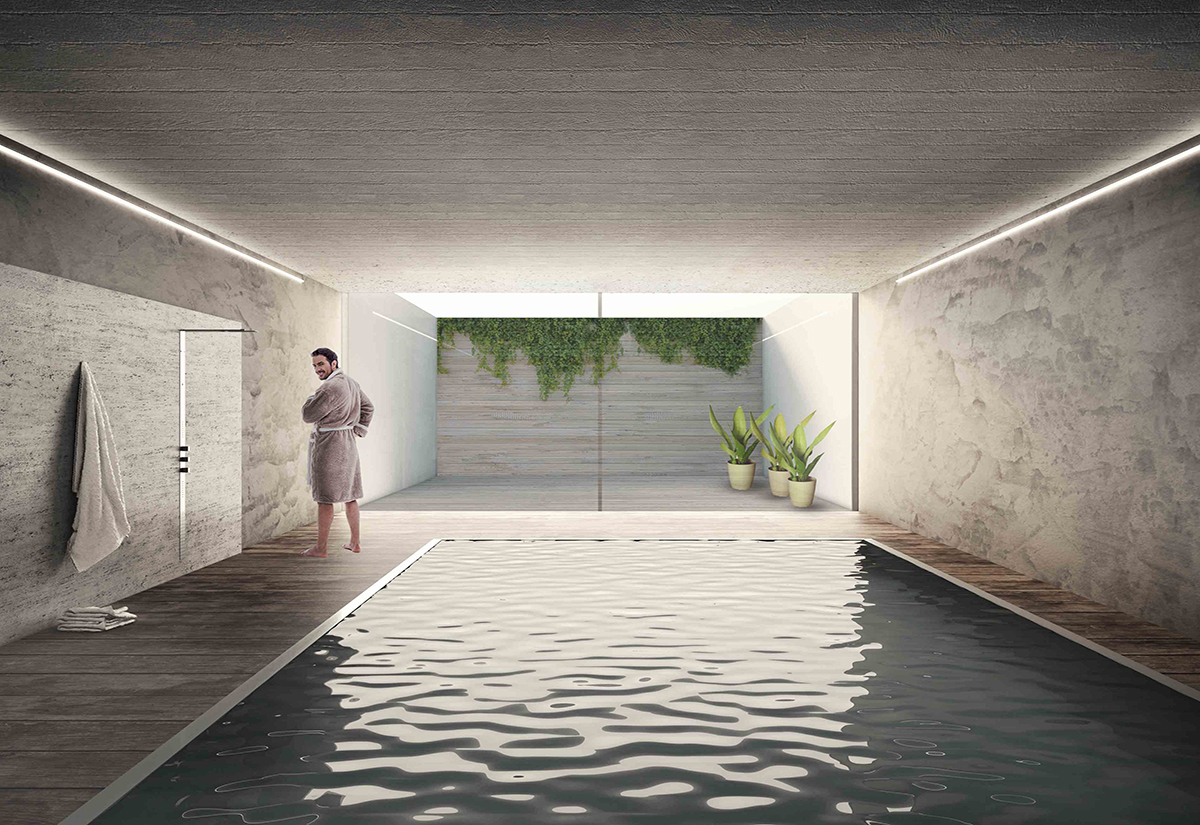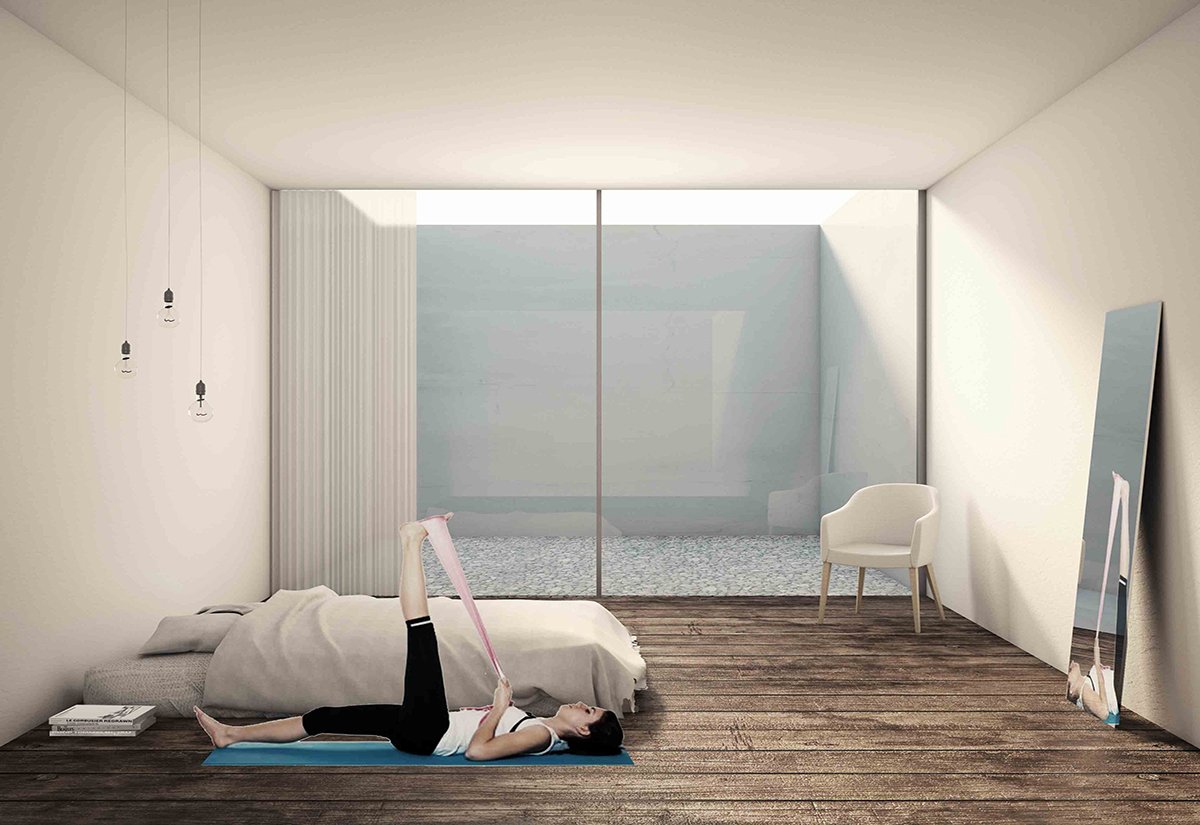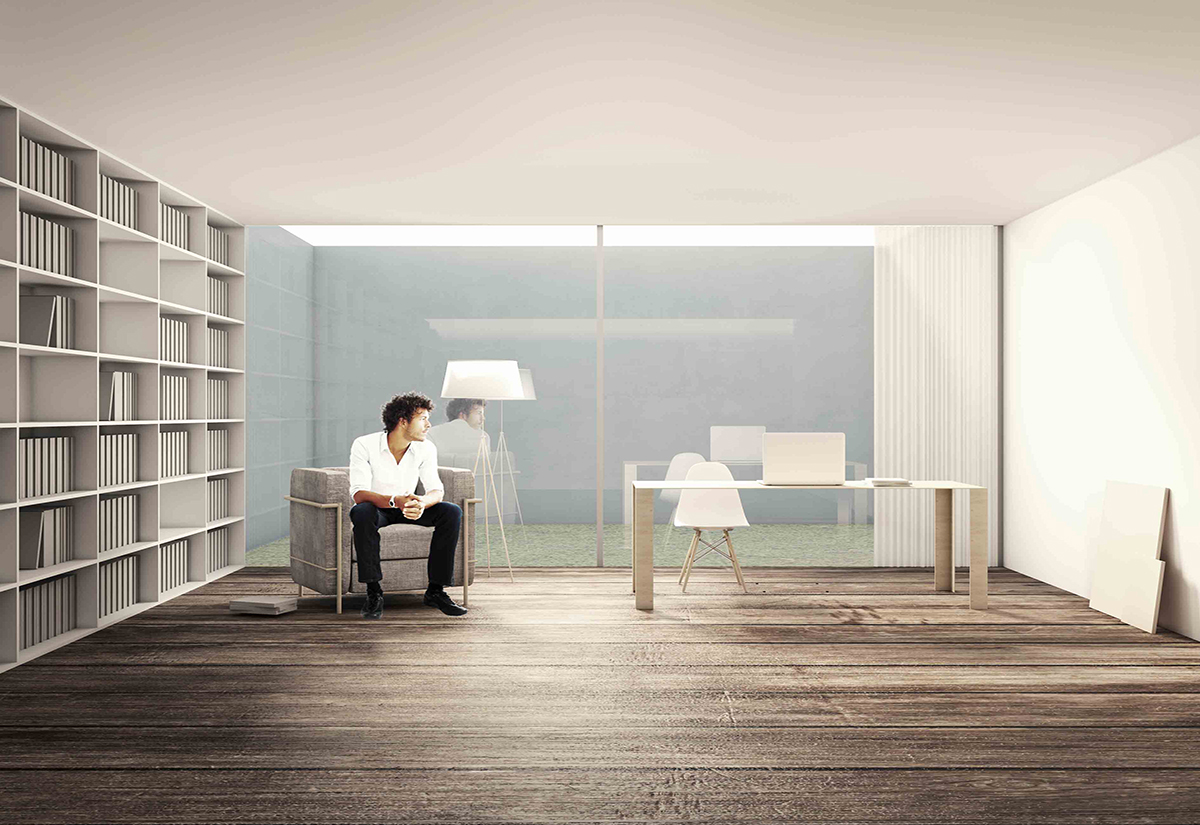Villa
The house is divided in private area with bedrooms, and social area with living-rooms. The private areas are at park level under the plot, with rooms opening to private patios in a intimate environment. The living rooms and social spaces are above, looking for an organic relationship with the context. The house is an abstraction on the green house archetype. The bedroom courtyards, revealed in the garden, relate with this archetypal object providing different readings on its scale. Scale and volume are controlled in a green context, with a clear identity that from its shape relates with the historical legacy far away: the Crystal Palace, 1851 London. In keeping with a desire to maintain the openness of the site and to reduce the ascendancy of this house project, the building was broken down into several spaces. Through their size and layout, which follow the function, the buildings achieve balance with the scale of the site and the shape of the paths, landscape features evoking its natural history. In order to visually and physically open up the site, the main glassed area features a hollow in the core of the building. This delicate glass box serves as an entry space to the living room. It is transparent and opens up to several directions of the site, and it can be crossed through to get to different areas of the park. The project avoids the strict, rectilinear shapes that would have conflicted with the subtle character of the site, as well as of free shapes that would have been overly restrictive from the perspective of the house’s internal operations. The slight scission of the spaces is in tune with the shape of the site and creates a subtle tension of the inner areas while maintaining a pleasure relationship with the users. The spaces are contained by a façade of reinforced, polished glass that reverts a blurred and fuzzy image of the sites contours, reflections that change as one strolls by depending on the landscaping and available light. The main social spaces flank the entry space, the kitchen and dinner room on one side and the garage and the offices on the other. The entrance space leads to a lower level that contains the introspective area: Bed rooms, guest apartmant and office spaces. This entry point provides a perspective of the entire building and of the panorama over the park reflected in the glass and polished surfaces. The entry area was designed as a void that is part of the landscape and visible from far away. This large, transparent area is an ample space within which contain the main social function. There is a living room, a tea room, a little guardroom, toilette and kitchen; or one can simply cross the intermediate space to go from one side or the other of the park or the site. Access to the lower level of the building is at the left of the entrance by using staircase, bringing users to enter this dynamic space contains a small gallery, services area and the rooms access. Also on the lower level be found the meeting area, providing a specific greeting location without interfering with the normal flow of individual client. Guest areas have their own entrance and are located in the left corner of the house, also on the lower level. The slipping room are located to the south of the lower part, riceving light by intimate patios. Although it is closely connected to all house activities, it is still a more intimate space apart.
Credits
Andrea Carniti





